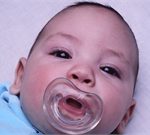Scrapes, Cuts and Stitches
 Most cuts and scrapes are minor and can be treated with local care at home.
Most cuts and scrapes are minor and can be treated with local care at home.
Basic care for a cut or scrape:
-
1. Hold pressure on the bleeding area for 10 minutes with a clean cloth or tissue. If the area is scraped (not cut) less time is needed.
2. If the cut is deep, and bleeding continues after 10 minutes of firm pressure, call your child’s pediatrician and continue to hold pressure over the area.
3. If bleeding has stopped after the first 10 minutes, rinse with water and look more closely at the injured area.
4. If the edges of the injured area come together and are lined up then apply antibiotic ointment (Neosporin, polysporin, etc.) and cover the area with a clean bandage.
5. For a scrape, wash gently with soap and water, and hold under running water to remove any dirt or debris before applying the antibiotic ointment and clean bandage.
6. Wash twice a day with mild soap and water, cover with antibiotic ointment and a clean bandage.
Call your child’s pediatrician at this point if:
- The cut goes through all layers of skin or is longer than 1/2 inch long.
- The cut gapes open on its own or when a little pressure is applied.
- You feel there is something in the cut (wood, glass, etc) and are unable to flush it out with water.
- Your child has a cut, not a scrape, on his/her face.
- Your child has not had a tetanus vaccine in the last 5 years.
Stitches
There are two primary reasons for having stitches placed.
-
1. To stop bleeding that will not stop with time and pressure.
2. To minimize scarring. As a parent you will need to make a decision here about whether the trauma of stitches is worth minimizing a scar. For a cut on your child’s face it might be important. For one on his/her arm or leg it might be less important. This is your decision.
For most cuts you can wait up to 8 hours for sutures to be placed. If you are waiting for your doctor’s office to open (less than 8 hours from the time the cut occurred), keep the area moist and clean – apply antibiotic ointment and a bandage over the injured area.
Wound Care after Stitches/Sutures are in place
The doctor who has placed the stitches (plastic surgeon, ER doctor, or your pediatrician) will give you specific instructions for your child. Here are some general suture care guidelines:
-
1. Keep dry for the first 48 hours.
- Facial stitches – approximately 5 days.
- Head and Body – approximately 7 days.
- Arms and Legs – approximately 10 days.
- Joints (knees, elbows) – approximately 14 days.
2. After the first 48 hours gently wash the area twice a day and apply antibiotic ointment followed by a bandage. If the area becomes scabbed it will be more difficult to remove the stitches when the time comes. Scabbing or infection of the area will also lead to bigger scars.
3. Give acetaminophen or ibuprofen as needed for pain (see medication dosing page)
4. Return to your pediatrician’s office as instructed by the suturing doctor to have the stitches removed. Some general timelines:
5. If steri-strips are placed over the wound once the stitches have been removed, it is OK to get them wet and allow them to fall off in their own time. They are often placed to help the wound continue to remain closed and to minimize scarring.
6. The injured area will scar, but keeping it out of the sun for at least six months will minimize the scarring. Protective clothing and hats, and lots of sunscreen are vital.
7. Vitamin E oil provides nutrients and moisture that might decrease scarring. You can use Vitamin E oil starting 2 weeks after the wound has occurred and for up to six months. If you notice redness or irritation after using the oil discontinue its use.
8. Mederma is a skin care product available without a prescription that may reduce scarring. Apply three times a day for up to 6 months. If redness or irritation results from use discontinue the mederma.
9. Silicone gel (kelo-cote, scaraway, etc.) has been shown to decrease the appearance of scars. Apply once a day and discontinue if irritation occurs.
Call your doctor if:
- Redness around the wound is spreading.
- There is a green, thick white and/or foul smelling discharge from the wound.
- Your child develops a fever.
- You feel that something is just not right – remember, no one knows your child like you do!
-Monique Araya, MD, FAAP
The medical information on this Web site is provided for educational purposes only. The information provided in this site, or through linkages to other sites, is not a substitute for medical or professional care, and you should not use the information in place of a visit, call consultation or the advice of your physician or other healthcare provider.
If you believe you have a medical emergency you should call 911 or your physician immediately. If you have any questions regarding your health or a medical condition, you should promptly consult your physician.
- Accidental Poisoning
- Bites and Stings
- Burns (and sunburns)
- Childhood Asthma
- Colic and Crying Babies
- Constipation in Children
- Cough & Cold
- Diaper Rash
- Diarrhea
- Ear Pain
- Fever
- Head Trauma and Head Injuries
- Kids and Allergies
- Lice
- Medication Dosages
- Nosebleeds in Children
- Pink Eye and Styes
- Rash
- Scrapes, Cuts and Stitches
- Sudden/Acute Abdominal Pain
- Treating a Common Cold Cough
- Vomiting and Nausea
 High Viral Loads Make Kids ‘Silent Spreaders’ of COVID-19
High Viral Loads Make Kids ‘Silent Spreaders’ of COVID-19 Clotting Tied to COVID-19 May Harm the Placenta
Clotting Tied to COVID-19 May Harm the Placenta ‘Kangaroo Care’ Has Big Health Benefits For Preemies
‘Kangaroo Care’ Has Big Health Benefits For Preemies Babies Are Spared Severe COVID-19 Symptoms
Babies Are Spared Severe COVID-19 Symptoms Sleepless Babies May Face Emotional Troubles as Kids
Sleepless Babies May Face Emotional Troubles as Kids